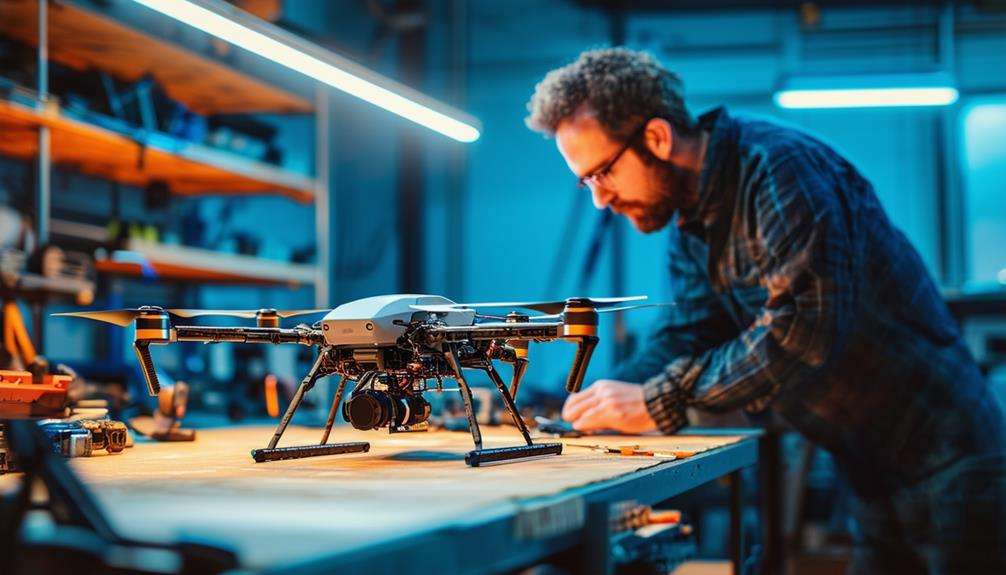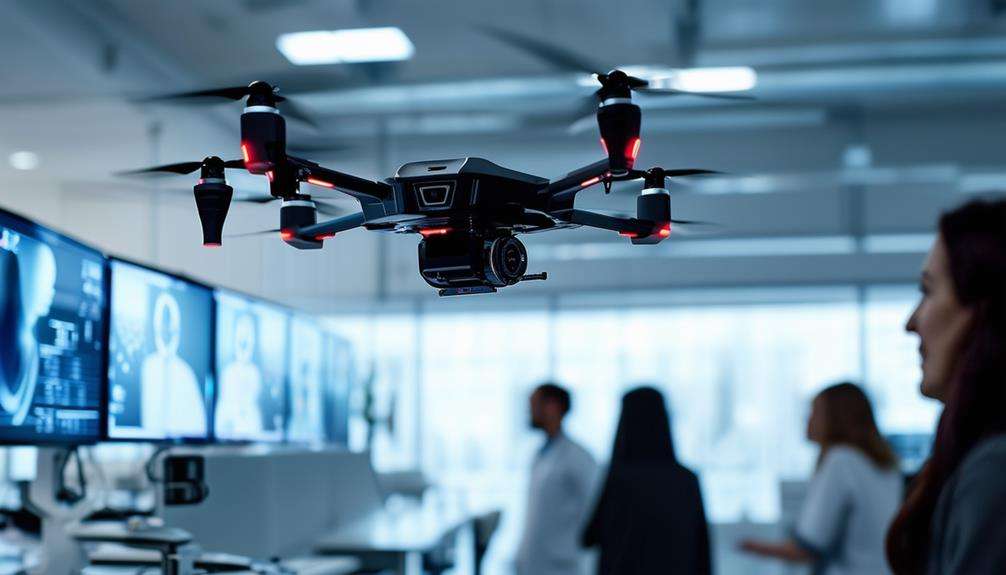What Happens if You Fly a Drone Above 400 Feet?
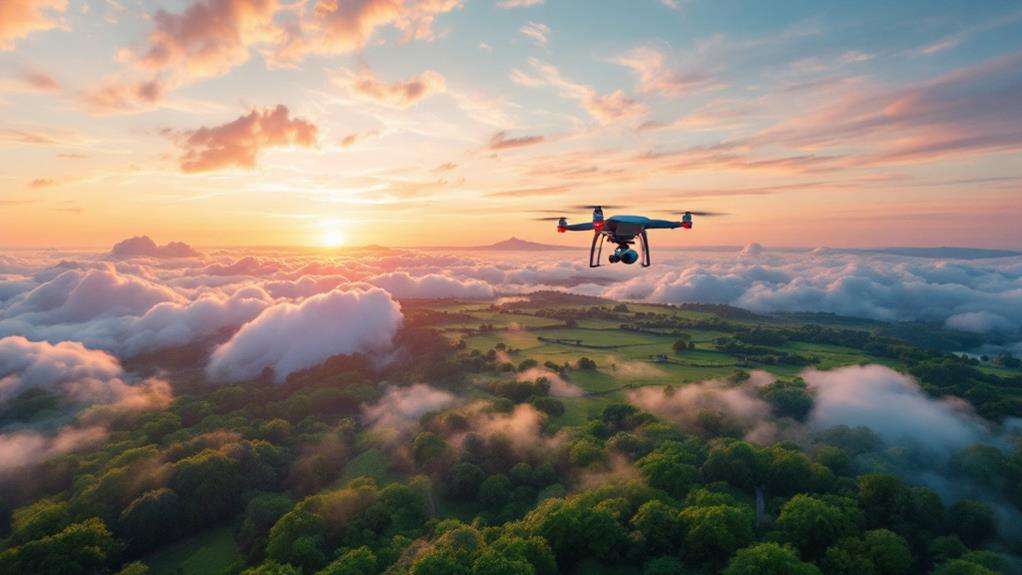
If you fly a drone above 400 feet, you're breaking FAA regulations, which can lead to hefty fines or even criminal charges. It increases the risk of colliding with manned aircraft, and the thinner air at higher altitudes can cause you to lose control of your drone. Greater wind resistance also affects its stability, posing dangers to public safety and privacy. Most drones are programmed to stay within altitude limits, but manual override could result in legal trouble. Besides, compliance helps maintain aviation safety. There's more you might want to consider before test-piloting at illegal heights.
Key Takeaways
- Violating the 400-foot limit can result in hefty fines and legal repercussions from the FAA.
- Flying above 400 feet increases collision risks with manned aircraft, endangering public safety.
- Drone stability is compromised at high altitudes due to greater wind resistance and thinner air.
- Unauthorized high-altitude flights breach FAA regulations, potentially leading to criminal charges.
- Drones may lose control at high altitudes, increasing the risk of crashes and accidents.
Drone Altitude Regulations
When flying a drone, it's crucial to understand the altitude regulations that govern your flight. The FAA sets a maximum altitude limit of 400 feet above ground level (AGL) for drones. This restriction helps prevent conflicts with manned aircraft, which typically fly above 500 feet. As a recreational drone pilot, you must keep your drone under this 400-foot ceiling, whether you're flying in controlled or uncontrolled airspace. Compliance is key, as the FAA doesn't allow waivers for surpassing this altitude. Technological advancements, such as obstacle avoidance systems, enhance navigation and ensure safety within these altitude limits. If you're a commercial drone pilot with a Part 107 license, you have a bit more flexibility. You can exceed the 400-foot limit when flying within a 400-foot radius of a structure, but you still need to respect the overall altitude restrictions. Failing to comply can lead to severe legal repercussions, including penalties and fines.
Risks of High Altitude Flying
In addition to violating FAA regulations, flying a drone above 400 feet poses significant risks to both aviation safety and personal liability. By exceeding the altitude limit, you increase the risk of a collision with manned aircraft, which typically fly above 500 feet. This violation of safety protocols not only endangers pilots and passengers but can also result in severe legal repercussions. The FAA has established these altitude limits to prevent such incidents, and failing to adhere can lead to hefty fines ranging from hundreds to thousands of dollars. Furthermore, operating at such heights can affect the drone's stability due to wind resistance, as the wind speeds tend to be higher at greater altitudes. This can lead to faster battery depletion and increased difficulty in maintaining control. Moreover, drone operations at high altitudes face additional challenges. Thinner air and other environmental factors can cause you to lose control of the drone, increasing the likelihood of crashes or losing the drone entirely. This not only poses risks to public safety but may also infringe upon the privacy rights of individuals on the ground, potentially leading to further legal issues. Understanding these risks is crucial for safe and responsible drone flying. It's important to follow FAA regulations, respect altitude limits, and consider the impact your drone operations may have on others to avoid fines and ensure public safety.
Legal Implications
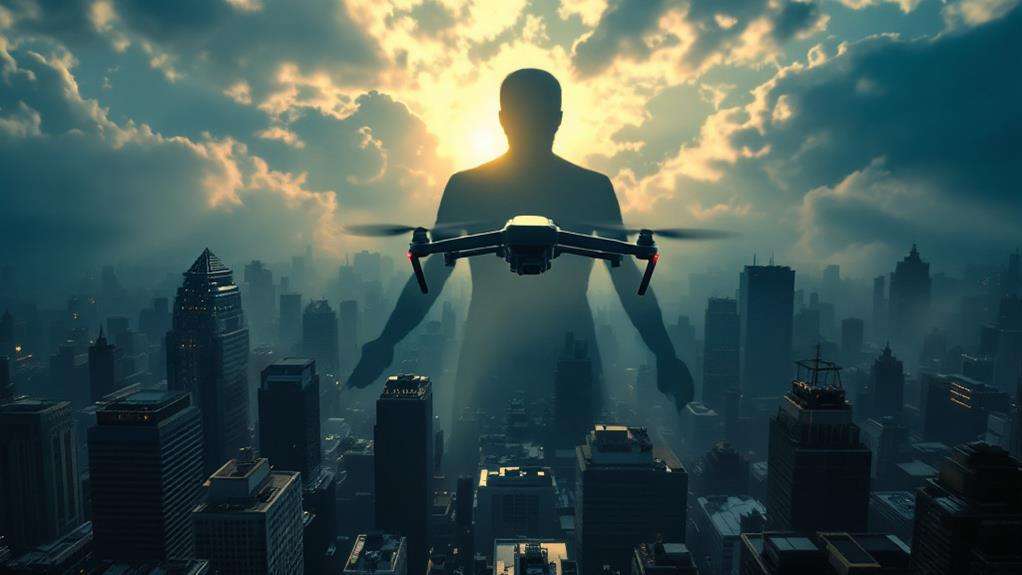
Flying a drone above 400 feet without authorization breaches FAA regulations and lands you in hot legal waters. The legal implications are significant; violators may face hefty fines ranging from hundreds to thousands of dollars. These penalties depend on how severely you exceed the altitude limits. The FAA doesn't take these infractions lightly, as compliance with altitude rules is crucial for maintaining aviation safety standards. If you're flying too high, you're not just risking financial penalties but also potential criminal charges in extreme cases.
Exceeding the 400-foot limit isn't just about breaking rules—it's about increasing the danger of collisions with manned aircraft. Such incidents could lead to catastrophic accidents, bringing even more serious consequences and further legal repercussions. The FAA's strict enforcement underscores the importance of staying within authorized altitudes to protect both you and other airspace users.
It's essential to understand these legal implications before flying your drone. Complying with FAA regulations isn't simply about avoiding fines or legal action; it's about ensuring the safety of everyone in the sky. Always stay informed and adhere to the altitude limits to avoid these serious consequences.
Safety Measures
Navigating drone safety involves more than just understanding altitude limits—it's about actively implementing measures to ensure secure flight operations. When you're flying drones, respecting altitude restrictions is crucial. Exceeding 400 feet isn't just a breach of regulation; it increases collision risks with manned aircraft, which often travel at these heights. This makes maintaining a visual line of sight more difficult, essential for avoiding obstacles and ensuring you maintain control of the drone.
To prevent potential legal issues, including hefty fines from the FAA, compliance with these altitude rules is necessary. Safety measures begin with checking weather conditions before takeoff. This helps you avoid unexpected weather changes that could lead to losing control. Additionally, staying informed about restricted airspace areas is crucial. Flying near airports or military zones without permission can lead to severe penalties.
Avoiding densely populated areas is another important safety measure. It reduces the risk of accidents and helps ensure compliance with local regulations, which often have specific rules about flying near people. By following these guidelines, you'll not only enhance safety but also enjoy a responsible and legal drone flying experience.
Technology Limitations
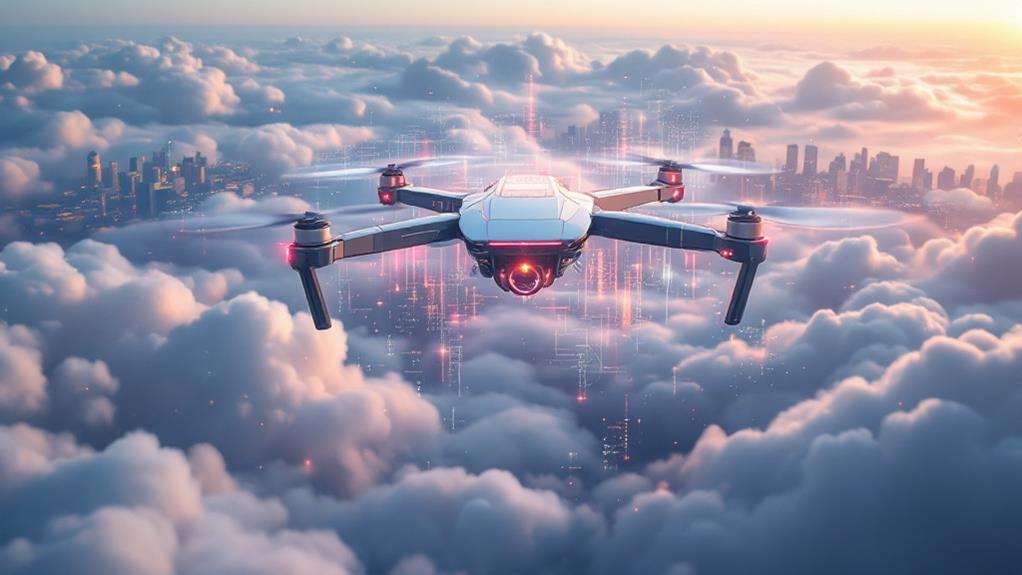
While respecting altitude limits is a key aspect of drone safety, it's also important to understand the technology that helps enforce these regulations. Drones often come equipped with firmware that restricts their flight to an altitude of 400 feet. This built-in measure ensures you don't unintentionally breach FAA regulations. When drones fly higher than the prescribed altitude limits, it can lead to instability due to thinner air, making control challenging.
Even though technological advancements in drone design suggest that drones can fly at higher altitudes, operators must adhere to safety protocols and FAA regulations. Most commercial drones have an operational altitude ceiling between 10,000 to 20,000 feet, but for safety, the altitude rule caps it at 400 feet above ground level (AGL). This is where technology limitations come into play—altimeters and GPS are crucial for maintaining compliance with these altitude restrictions.
Community Perspectives
Diving into community perspectives, you'll find a mix of opinions on the 400-foot altitude limit for drones. For many in the drone flight community, this limit initially seemed more like a guideline than a hard rule. However, as regulatory compliance has become more enforced, frustration has grown among pilots, especially those who are professional drone pilots. They argue that strict altitude regulations can sometimes stifle creativity and operational flexibility, particularly in fields like aerial photography and surveying.
In discussions, safety often emerges as a top concern, but there's a clear division on how rigorously the 400-foot limit should be applied. Some pilots believe that a more flexible approach could allow for more innovative drone operations without compromising safety. However, others stress the importance of maintaining strict adherence to prevent potential accidents.
The community perspectives underscore a tension between following regulations and the desire for greater freedom. As debates continue, it's clear that the industry needs ongoing dialogue to balance safety with the need for innovation. This conversation is crucial for ensuring that drones can be used effectively and safely across various applications.

